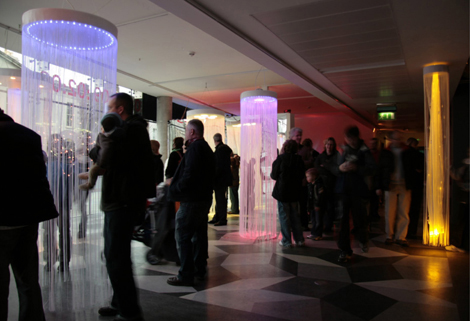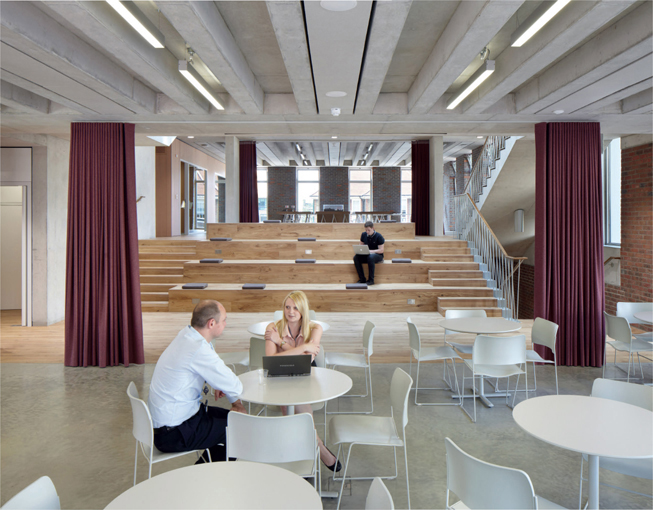Community Spaces
Universities meet these objectives in different ways, from carrying out activities off-campus through partnership links, to bringing outside organisations and school children onto campus. Universities are becoming much more transparent and open, which may raise conflicting issues between security and health and safety on the one hand and outside visitor groups on the other. Technology enables research and teaching to take place across organisations; the cost of major scientific equipment and facilities is such that sharing is increasingly common and there is a wish to support enterprise with students in addition to innovation with research.
Specialist Facilities
Collaboration on specialist facilities is growing. The Francis Crick Institute (see page 19) is a world-class cancer research facility in London created by three universities (Imperial College London, King’s College London and University College London), the Medical Research Council and two medical charities (Cancer Research UK and the Wellcome Trust), while the Carnegie Pavilion in Headingley, Leeds, is a dual-use cricket ground for Leeds Beckett University and Yorkshire Cricket Club. In the arts, Portsmouth University has worked in partnership with the New Theatre Royal on a joint redevelopment (page 56) where students work with industry experts in facilities that include a theatre and television studio, flexible teaching spaces, music practice rooms and offices.
Opening up Science and Ideas
More established universities have world-famous art and museum collections, which are a research and a teaching resource often well used by local communities. Modern facilities focus on showcasing current and future research.
Designers of new buildings therefore need to be conscious of the university’s strategy and the need to plan access to new building projects.
Other universities have taken the university out of its own estate into the community – the Tinderbox talks at Strathclyde University are an example which aims to replicate 18th-century coffee houses as ‘hotbeds of comment, debate and the exchange of new ideas’.
Example
Science Gallery Trinity College Dublin, RKD Architects
The Science Gallery at Trinity College Dublin, supported by Google, which aims to showcase the research work of the university. It has become a major attraction and is being successfully replicated through Science Gallery International (SGI) across the world, including London, Bangalore and Melbourne.


Figures 2.100 and 2.101
Links with Schools
Universities have relationships with schools for many reasons. Early years childcare provision may be provided on campus, as for example the award-winning day nursery at the University of Edinburgh and, at later years, universities have widening-participation programmes to encourage school children’s interest in higher education, particularly in subjects such as the sciences, medicine and mathematics, and in areas where participation may be low. Every university will have its own strategy; some have relationships with neighbouring schools and work with them, while others sponsor academies, such as at UCL and King’s College London Mathematics Academy, the latter a sixth-form school which combines mathematics teaching in its new building with students benefitting from other lectures and activities on the main campuses.
Running programmes on campus may have implications for design, as scientific facilities become more transparent, a trend seen with other university spaces. Some institutions provide dedicated facilities on campus which may double-up for other uses. King’s College London has an experimental teaching facility at its Strand campus, which enables other higher education organisations to use it; while the Faculty of Computer Science and Mathematics at the Technische Universität München has imaginatively used its art budget to create two full-height parabolic slides in the central atrium leading to a workshop at the base.
In Camberwell, London, the Maudsley Charity has built ORTUS, a well-designed



Figures 2.102, 2.103 and 2.104 ORTUS, London, Duggan Morris
